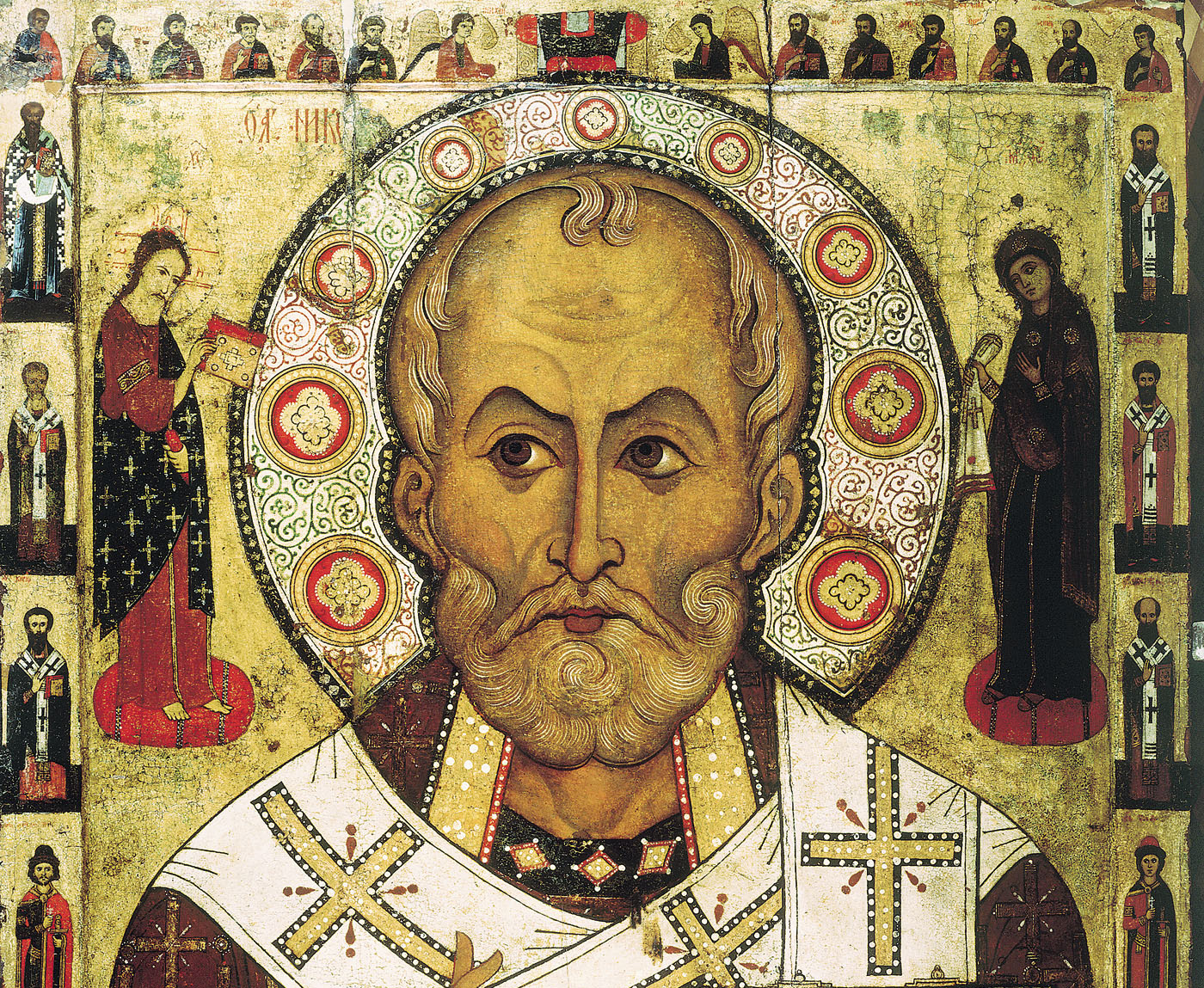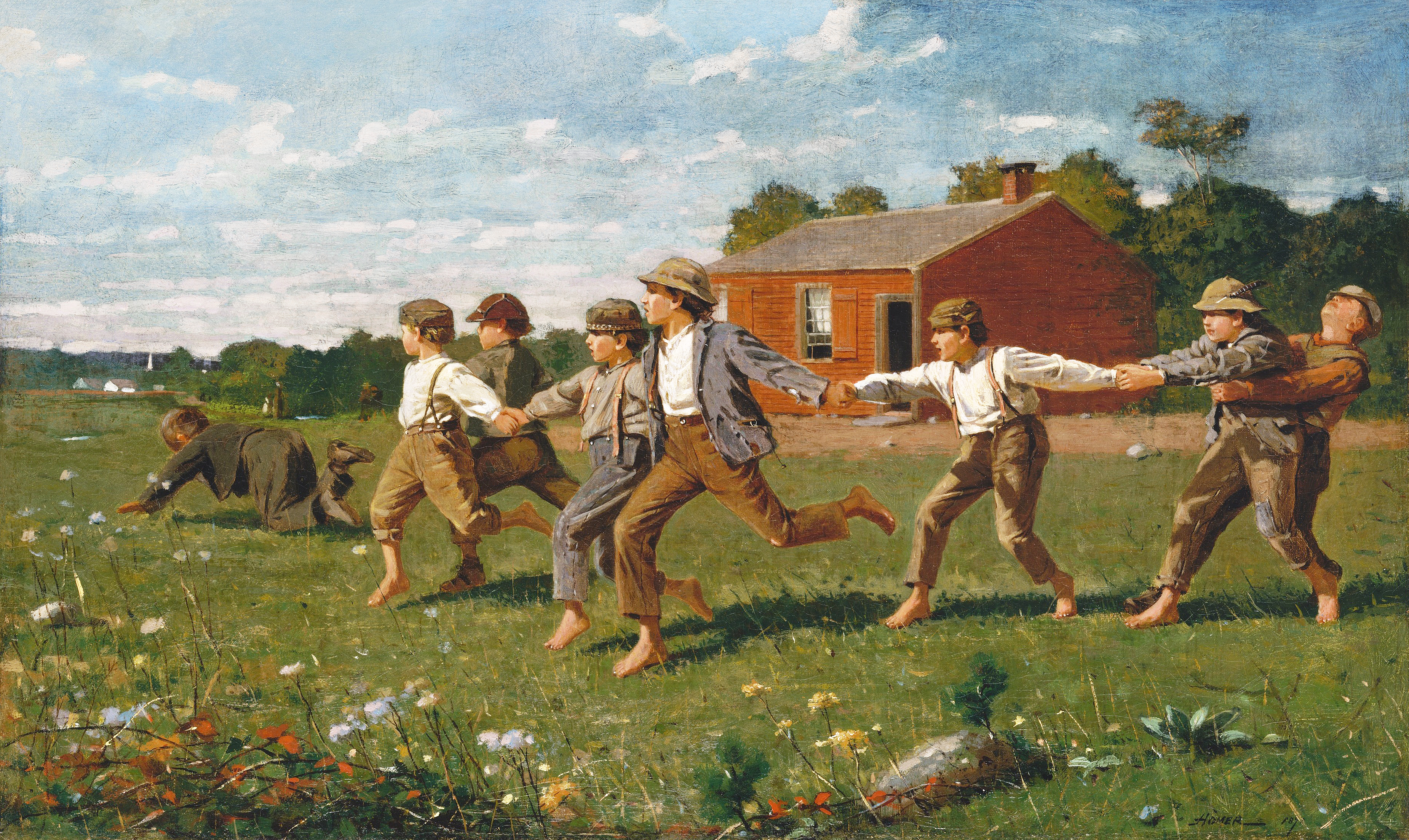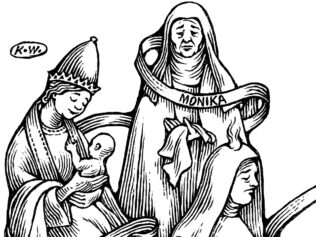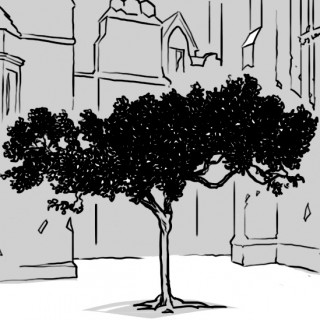
Everybody knows who brings Christmas presents for children. But what’s the origin of the saint whose name this charming deception bears? It’s like something out of Dan Brown.
It was 1087. Not far from the city of Myra in Anatolia, by now almost completely taken from Byzantium by the Seljuk Turks, sailors from Italy arrived. They came from Bari, then a trading power and theoretically an ally of the Eastern Christians. But if the residents of Myra thought the Barese were sailing to their rescue, they were gravely mistaken. The seafarers had a different mission: to steal the relics of St. Nicholas, famous among Christians of the Middle Ages.
His remains were considered priceless. A fragrant, oily liquid flowed from them; known as manna, it supposedly had miraculous healing powers. The relics didn’t just have this blessed effect on whoever possessed them. They also brought glory to the place they were kept, drawing in crowds of pilgrims, and with them the jingle of coins.
The Barese must have already heard the jingling in their minds when they found themselves beside the Cathedral of St. Nicholas, just outside the walls of Myra. They knew that their competitors from another Italian city, Venice, were already on the way. So they had to be quick and efficient. First they sent two spies, who returned with the news that the church had no armed guards. Then the 47 medieval sailors from Bari transformed into medieval commandos. They dressed as humble pilgrims, concealed their weapons and trotted to the cathedral. When they got there, they asked the monks to let them into the shrine, let them collect a bit of manna, and show them the saint’s true resting place – not the sarcophagus that was used to delude the simple. The bones in fact lay under it, beneath a mosaic floor.
But the monks became suspicious that the visitors weren’t just looking to pick up some miraculous liquid and venerate the saint. They started to ask whether the pilgrims wanted to steal the relics. They swore to die rather than to allow this. The Barese didn’t have to be told twice. The swords and daggers, pulled from under the pilgrims’ rags, flashed in the light. The monks’ only option was to beg the Barese to abandon their plan. The seamen might even have had a moment of doubt, and the monks could have begun to think about fleeing and calling for help from the burghers from outside the walls, but a miracle occurred. Or at least that’s how it was described by a witness, a certain Nicephorus of Bari. The glass vessel with the holy manna suddenly slid from the stone column onto the floor – but it didn’t shatter.
That’s when the monks admitted that a year earlier they had had a vision in which St. Nicholas appeared to them and announced that his bones would be moved. In this situation, the Barese didn’t hesitate. One of them, a certain Matthew, snatched up a hammer and started to break up the marble floor under Nicholas’s resting place. While the others shrank from breaking up the sarcophagus, fearing they would meet with some terrible fate, he swung with all his might and uncovered the bones of the saint, intact in the miraculous liquid. A truly heavenly fragrance filled the air.
The Barese wrapped the remains in a silken cloth and took them to their ship, where 15 of their comrades were ready to set sail. Nicephorus assures us that they went to the ship in a procession, singing as they went. But this can certainly be classified as a fairy-tale; doubtless the Barese wouldn’t have taken this unnecessary risk. They took the treasure they had captured and sailed away.
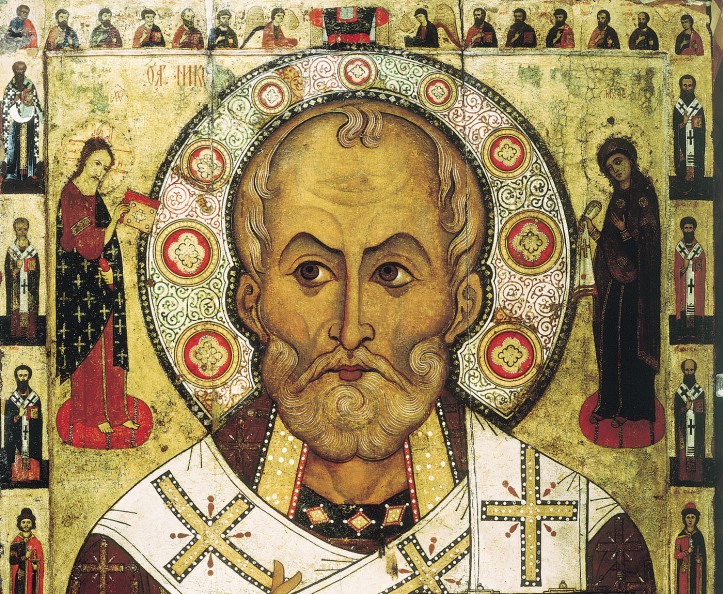
Pieces of the saint
The Barese built a basilica for the remains from Myra, or, to be precise, for 75% of them. For as it turns out, the commandos didn’t take all the bones. They were in too much of a hurry. So, in 1099, seafarers from Venice, envious of the Barese’s accomplishment, appeared in Myra. They were sailing to the Holy Land on a crusade, led by Vitale Giovanni, son of the doge Vitale I Michiel. “During the journey, full of dramatic adventures, among which there was no shortage of battles and storms, the Venetians […] began searching for the relics of St. Nicholas in the ruined cathedral,” writes Professor Tomasz Jasiński. “After a search on a broad scale, destruction of walls, excavations of land and even torturing the guardian of the sacred place, the Venetians finally found the holy relics. Next, with their valuable loot, passing through Cyprus and Jaffa, they made it to Jerusalem, later to take part in the siege and successful storming of Haifa.” When they returned home from the victorious crusade, they laid the relics in the monastery of St. Nicholas on the Lido.
This story was written early in the 12th century by an unnamed monk from the Lido, whom some researchers associate with Gall Anonim, later a chronicler of the court of Bolesław III Wrymouth.
There were also stories of one of the saint’s fingers, which by some miracle made its way to Lorraine with a French crusader. Other small pieces made it to the New World – to the Greek Church of St. Nicholas in New York. It was given by Pope Paul VI in the 1970s as a gesture of reconciliation with the Orthodox Church. Unfortunately, the church stood near the World Trade Center, and didn’t survive the 9/11 terrorist attack. Today, reconstruction is under way. After all, this is New York, a city where you can’t have December without presents! And a place where St. Nicholas – the one in bishop’s robes with a crosier in his hand – metamorphosed into Santa Claus, a full-figured old man in a red coat, known from advertisements, Hollywood films and shopping malls.
The saint owes his American nickname to the Dutch. As late as the mid-17th century, New York was still New Amsterdam. The Dutch called St. Nicholas ‘Sinterklaas’; this was Anglicized as ‘Santa Claus’. At the beginning of the 19th century, the New York Historical Society recognized Nicholas as the city’s patron saint, and a literary star of the time, Washington Irving, wrote a humorous history of the city, describing Santa Claus as a cheery old man, flying over the trees on a sled and delivering presents to children. This metamorphosis was completed when the medieval mania for owning relics started to be replaced by the contemporary madness of shopping and exchanging presents.
But we’ve skipped a key issue. How did this St. Nicholas mania get its start more than a thousand years ago?
Even more miracles
The answer to this question comes not from documents, but medieval hagiographies. From them we can learn that Nicholas was born around 270 in Patara, not far from Myra. The community of followers of Jesus of Nazareth operated very effectively there, boasting that St. Paul himself had once visited the city.
Nicholas grew up in a Christian home. According to the hagiographers, even as a toddler he showed signs of being exceptional (e.g. he was exceptionally obedient and regular in nursing from his mother’s breasts). Growing up, he avoided his arrogant peers; he didn’t hit on girls. He was wary of engagement in the world of politics and corrupt business. And those were very uncertain and dangerous times for Christians. Barely two million of them lived in the empire. In his biography of the saint, the historian Adam C. English writes about how Christians were an illegal and persecuted minority. In the mid-3rd century, the Emperor Decius fought fiercely against them. And by the end of that same century, Diocletian went after them.
It was that ruler who on 23rd February 303 gave an order that all copies of the Bible were to be confiscated and burnt, the churches razed to the ground, and the faithful forced to worship the old deities. The Christians, with their faith in one God, simply didn’t fit into the pragmatic world of the Romans, where the pantheon would expand, taking in new deities without a second glance so that the state could grow powerful, the people could live in prosperity and the emperor could concentrate on more important things.
There was no shortage of martyrs for the cause of monotheism. They ended up tortured, murdered, burnt. When the blood of the martyrs strengthened the Christians in their convictions, and Rome ended its repression, the devotees of the new faith began destroying pagan shrines. It was Nicholas who burnt the temple of Artemis in Myra to the ground.
But the Christians gained respect most of all because of their solidarity. Hence the story of the young Nicholas, who threw money to a certain unbeliever who couldn’t afford a dowry for his three daughters. The saint had to act, because otherwise the girls would have been sold to a brothel. The father of the poor maidens, who spied Nicholas when he was throwing the money through a window, couldn’t contain his gratitude, but his benefactor forbade him to reveal the truth.
Soon our hero would be appointed Bishop of Myra. He was also to participate in the Council of Nicaea, called by Emperor Constantine the Great. Apparently, Nicholas argued on this occasion with the ‘heretic’ Arius about theological questions, and they came to blows. Nor was he afraid to intervene in criminal cases: he defended three soldiers unjustly sentenced to death.
When Nicholas himself was dying, he was already surrounded by a penumbra of sainthood. He must have had the feeling of well-done apostolic work, because in the Roman Empire there were no longer just two million, but 34 million Christians. They accounted for more than half the residents of the Empire.
Nicholas died on 6th December, but we don’t know the year – just sometime in the mid-4th century. In the end it doesn’t matter, because that wasn’t the end of his activities. Like some kind of superhero, he would return from the world beyond to save children, sailors, and so on. The list of those who owe him gratitude grew. The virtues of the sainted bishop of Myra were pointed out in the 5th century. In 6th-century documents, we already read about churches dedicated to Nicholas. In the 9th century, meanwhile, his first hagiographic biographies appear.
There’s just one problem. There isn’t any convincing evidence that St. Nicholas of Patara, Bishop of Myra, ever existed.
Basil the Forgotten
The bones buried in Myra could belong to somebody else. Nor have any documents survived that directly attest to the episcopal ministry of Nicholas or to his participation in the Council of Nicaea. So it’s no surprise that in contemporary Roman Catholic encyclopaedias, nobody fiercely defends the historicity of St. Nicholas, and the celebration of his memory on 6th December is optional in the Church of Rome.
On the other hand, if he didn’t exist, how do we explain the growing popularity of the name Nicholas after the 4th century? The name itself, meaning ‘victory of the people’, was very rare still in the 3rd century. Why did it take Anatolia by storm, followed by Constantinople, Greece and, finally, the rest of the Christian world?
Researchers once suspected that it gained popularity because of another St. Nicholas, the son of Epiphanius and Nonna. In fact, he did live in the area, but only in the 5th to 6th centuries. He was more likely to have got the name from the legendary bishop than to have been the source of the legend himself. Although… it’s possible that whether or not the saintly Nicholas of Patara existed, he received the praise for the actions of many other clerics (and facts from their lives also became attached to him).
Among his potential ‘prototypes’, St. Basil is worthy of particular attention. He was born in 329 in Caesarea in Cappadocia, thus also in Asia Minor. We know he came from a religious family, which experienced persecution during the time of Diocletian, and strongly persuaded following generations of the faith. So much so that it wasn’t just Basil who took holy orders, but also his brothers Gregory and Peter, and his sister Macrina.
He didn’t have a flashy career. He preferred to meditate, and to help the needy when necessary. “The correspondence that’s been preserved testifies clearly that he was very interested in matters concerning salvation, but also the ongoing ailments of everyday life,” writes his biographer Father Antoni Żurek. Basil did charitable work, caring for pilgrims and the ill. He promoted monastic life and fought ‘heresies’ (criticizing Arianism, even when the emperor Valens unequivocally spoke in favour of it).
But earlier Basil had been forced to oppose the biggest opponent of Christianity of his time: Emperor Julian the Apostate. This sovereign, who ruled from 361 to 363, tried to renew faith in the old gods of the Roman Empire. The two met when they were in their 20s, during Basil’s studies in Athens, before he was ordained. “For at least a year, their paths crossed in Athens,” Żurek writes. “They studied under the same masters.”
Apparently, it was precisely this earlier acquaintance that emboldened Basil, years later, to criticize the emperor – for an attack on In Defence of Truth, a work by Apollinaris of Laodicea that was critical of the ruler. Julian said of this book: “I read it, I understood it, I condemned it.” But Basil wrote a letter to the emperor with the words: “You read it, but you didn’t understand it, because if you understood it, you wouldn’t have condemned it.” Julian didn’t play around with wordplay. When he recognized that Basil’s hometown of Caesarea was a bastion of devout Christians, it started to bug him. “This emperor came to hate the city, because the clear majority of its residents were Christians, who many years earlier had destroyed a significant portion of the pagan temples located there – and even during his times, the shrine of Fortuna was destroyed,” Żurek writes. “In response, Julian ordered that the churches there be plundered of all valuables, with a ransom to be paid into the state treasury, and imposed severe taxes on all Christians.” Caesarea lost its status as a city, and the emperor sentenced to death the prominent citizens involved in destroying the temple of Fortuna.
But Julian the Apostate didn’t manage to replace Christianity, and soon died in a battle with the Persians. Meanwhile, a few years later St. Basil performed one of his most famous acts. During a crop failure in 368, he sold the church’s property and his own to buy peas and meat for the hungry. Maybe it wasn’t heroic, but these are exactly the kinds of acts that people remember for a long time.
Thus if we look at the CVs of the historically unattested St. Nicholas of Patara and the attested St. Basil, we see similar elements. Or maybe Basil was modest enough that it suited him to attribute his acts to someone else, someone fictitious? Can we rule this out? Let’s also add that in the Greek (Byzantine) tradition it’s St. Basil, not St. Nicholas, who brings presents to children! Just not in December, but on 1st January.
No new crusade
Even if it’s not a coincidence, nobody’s exaggerating too greatly. In the Orthodox world, both Basil and Nicholas are important. And lovers of the traditional image of the saint from Myra concentrate on criticizing Santa Claus as a symbol of the commercialized holidays and capitalist debauchery. Are they correct? As the authors of The 101 Most Influential People Who Never Lived write modestly, it’s worth remembering that both St. Nicholas and Karl Marx have big white beards and believe that people should be given what they need, regardless of the cost. Plus, the authors continue, St. Nicholas always dresses in red, which is the symbolic colour of communism, after all.
Well, where you stand depends on where you sit. Besides – however banal it may seem – everything moves and changes. Myra is now Demre in Turkey. Caesarea is Kayseri, in the same country. Patara is now a pile of picturesque ruins. The saints too must undergo transformation.
The next time we read that on the basis of the remains kept in Bari the REAL face of St. Nicholas has been restored (with a broken nose, the effect of the fight with Arius!), let’s take it with a pinch of salt. Just like the news of the supposed relics of the saint in Demre (Myra), which the Turks earn money on today. It’s all just as certain as the various houses of Santa Claus in the far north – like the charming hut visited by excited children in Drøbak, near Oslo. But who would want to start a crusade in the name of historical truth if it takes the last remaining crumbs of magic from our world? Not to mention all the tears that children would shed.
Bibliography:
Gerry Bowler, Santa Claus: A Biography, McClelland & Stewart, 2005
Adam C. English, The Saint Who Would Be Santa Claus: The True Life and Trials of Nicholas of Myra, Baylor University Press, 2012
Tomasz Jasiński, O pochodzeniu Galla Anonima [On the Origins of Gallus Anonymous], Wydawnictwo Avalon, 2008.
Allan Lazar, Dan Karlan, Jeremy Salter, The 101 Most Influential People Who Never Lived, HarperCollins, 2006
Father Antoni Żurek, Święty Bazyli Wielki [St. Basil the Great], WAM, 2009
Translated from the Polish by Nathaniel Espino


